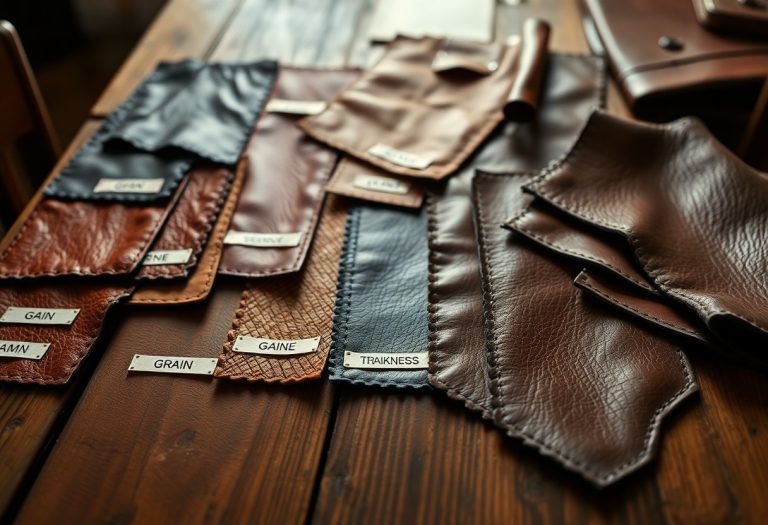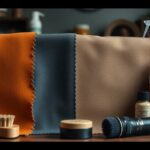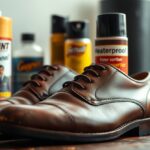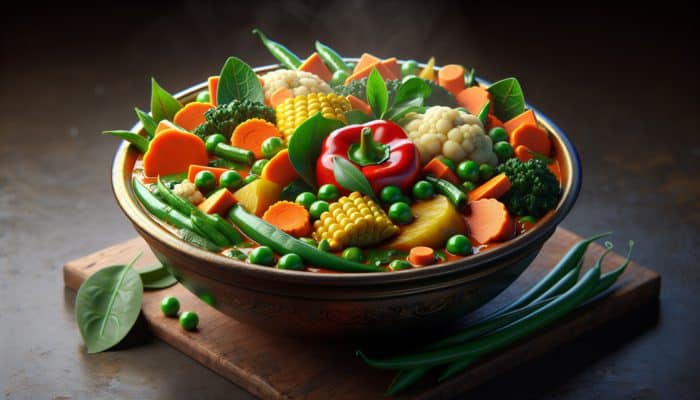Are you feeling overwhelmed by the extensive variety of leather options available in the market? You’re not alone! This thorough guide is your go-to resource for making informed decisions about various leather products. Each leather type offers unique advantages suited for different applications, from the luxurious softness of calfskin to the remarkable durability of full-grain leather. By understanding the unique characteristics and origins of quality leather, you can ensure that your choices enhance the longevity and functionality of your items. Whether you’re hunting for shoes, jackets, or accessories, this guide will help you select the most appropriate leather type for your specific needs. Remember, choosing the wrong leather can lead to premature wear and unnecessary financial loss, so let’s explore the various types and their ideal applications.
Explore the Diverse Types of Leather and Their Unique Benefits
The extensive selection of leather types available today each possesses its own distinct properties and applications, particularly in the realm of footwear manufacturing. Grasping these differences is crucial for making informed purchasing choices. Below is a comprehensive overview that outlines the characteristics distinguishing each leather type:
| Leather Type | Main Characteristics |
|---|---|
| Full-grain | Unmatched quality, natural surface, ultimate durability |
| Top-grain | Refined sanded surface, good durability, budget-friendly |
| Split leather | Lower layer of hide, less durable, economical option |
| Nubuck | Sanded top surface, soft and velvety texture |
| Suede | Soft, fuzzy finish with limited water resistance |
- Grain quality significantly influences the leather’s durability, directly impacting its performance in various applications.
- Surface texture affects both the aesthetic appeal and maintenance requirements of the leather, thus influencing your selection.
- Thickness is essential in determining the appropriate applications for each leather type, ensuring optimal functionality.
Understand Common Leather Types to Make Smart Selections
When choosing the right leather that perfectly suits your specific needs, it’s essential to familiarize yourself with common varieties and their best applications. Below is a detailed breakdown:
| Type | Best Use |
|---|---|
| Calfskin | Ideal for elegant dress shoes and fine accessories, providing unmatched sophistication |
| Cowhide | Best for robust boots and heavy-duty items, ensuring durability in demanding conditions |
| Pigskin | Excellent for affordable accessories, striking a balance between economy and quality |
| Sheepskin | Perfect for soft goods and linings, delivering exceptional comfort and warmth |
| Goatskin | Common in gloves and light accessories, offering a blend of durability and softness |
Dive Into the World of Exotic Leathers and Their Distinctive Qualities
The captivating realm of exotic leathers showcases a variety of unique characteristics and eye-catching appearances that can enhance your fashion or functional items:
| Type | Properties |
|---|---|
| Alligator | Luxury items featuring exceptional durability and eye-catching patterns |
| Ostrich | Notable for its unique pattern and soft texture, adding flair to any piece |
| Stingray | Renowned for its extreme durability and distinctive texture, perfect for statement pieces |
| Python | Flexible with unique scales that lend character and individuality |
| Lizard | Characterized by fine texture and delicate patterns, ideal for high-end accessories |
Products made from bonded leather consist of leather fibers mixed with binding materials. Here’s what you need to be aware of:
| Aspect | Detail |
|---|---|
| Composition | Made of leather fibers combined with binding agents, offering versatility in applications |
| Durability | Generally less durable than genuine leather, suitable for light to moderate use |
| Cost | A more budget-friendly option for consumers, providing accessible choices |
| Usage | Commonly used in furniture and various accessories, enhancing functionality and style |
| Care needs | Requires minimal maintenance to retain its appearance, appealing to those seeking ease |
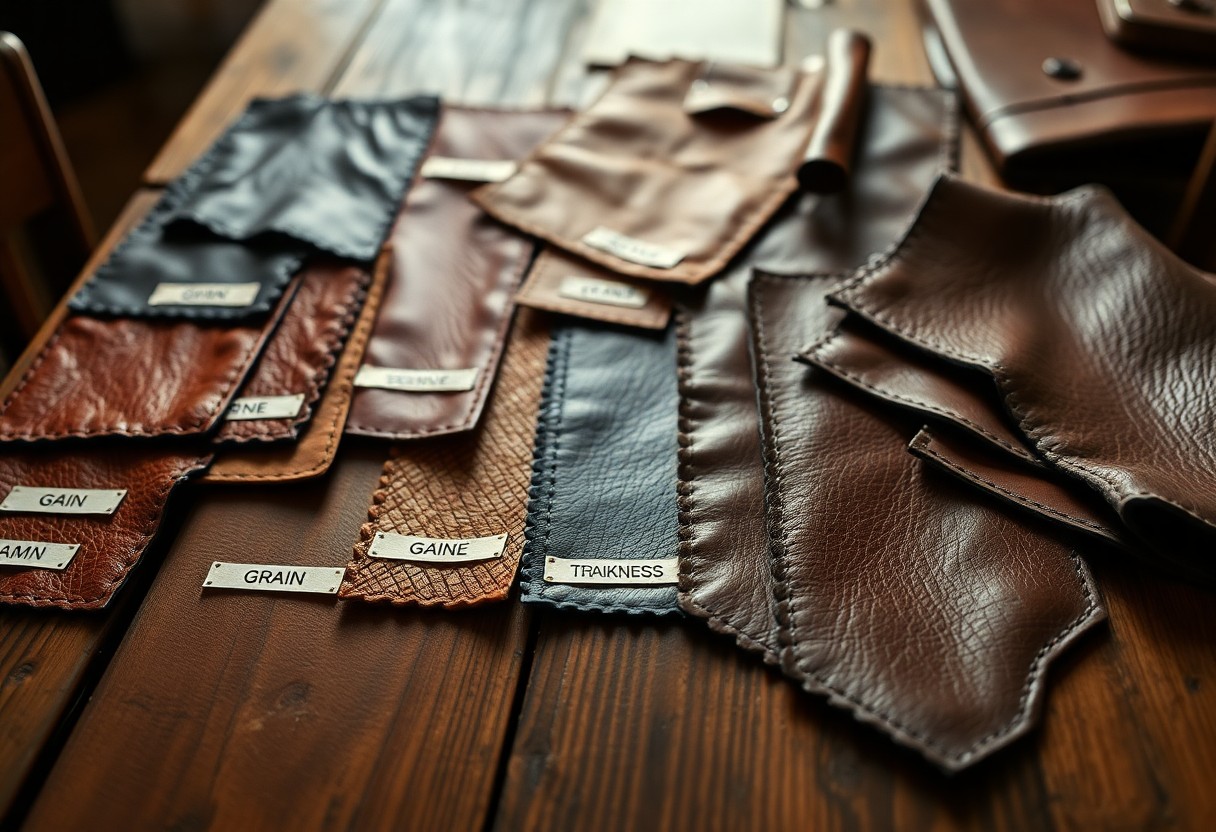
Key Factors That Influence the Quality of Leather
While numerous variables can affect the quality of leather, the primary determinants include animal source, hide preservation, tanning process, and finishing techniques. The durability and visual appeal of your leather products heavily depend on these elements operating in harmony. Understanding these factors empowers you to make informed choices when selecting leather items that will serve you well for years to come.
Analyzing Leather Quality by Animal Source
One of the most critical factors in determining leather quality is the animal source. The characteristics of your leather are closely linked to the age, breed, and living conditions of the animal from which it is derived. For instance, calfskin is known for its exceptional softness and flexibility compared to the more rugged texture of leather sourced from full-grown cattle. Furthermore, exotic leathers such as those from crocodiles provide unique textures and extraordinary durability, making them highly sought after in luxury markets for their exclusivity and remarkable quality.
The Crucial Influence of the Tanning Process on Leather Quality
The tanning process is essential as it transforms raw hides into usable leather through various chemical treatments. For example, chrome tanning results in a softer, more flexible leather, while vegetable tanning produces firmer, more natural leather options. The level of expertise and precision involved in the tanning process significantly affects the quality of the finished leather product. Moreover, controlling duration and temperature during tanning is vital to ensure that the leather retains its integrity. Inconsistent practices can lead to weak spots and uneven coloring, while rushed processes may result in leather that deteriorates rapidly, ultimately compromising its overall quality.
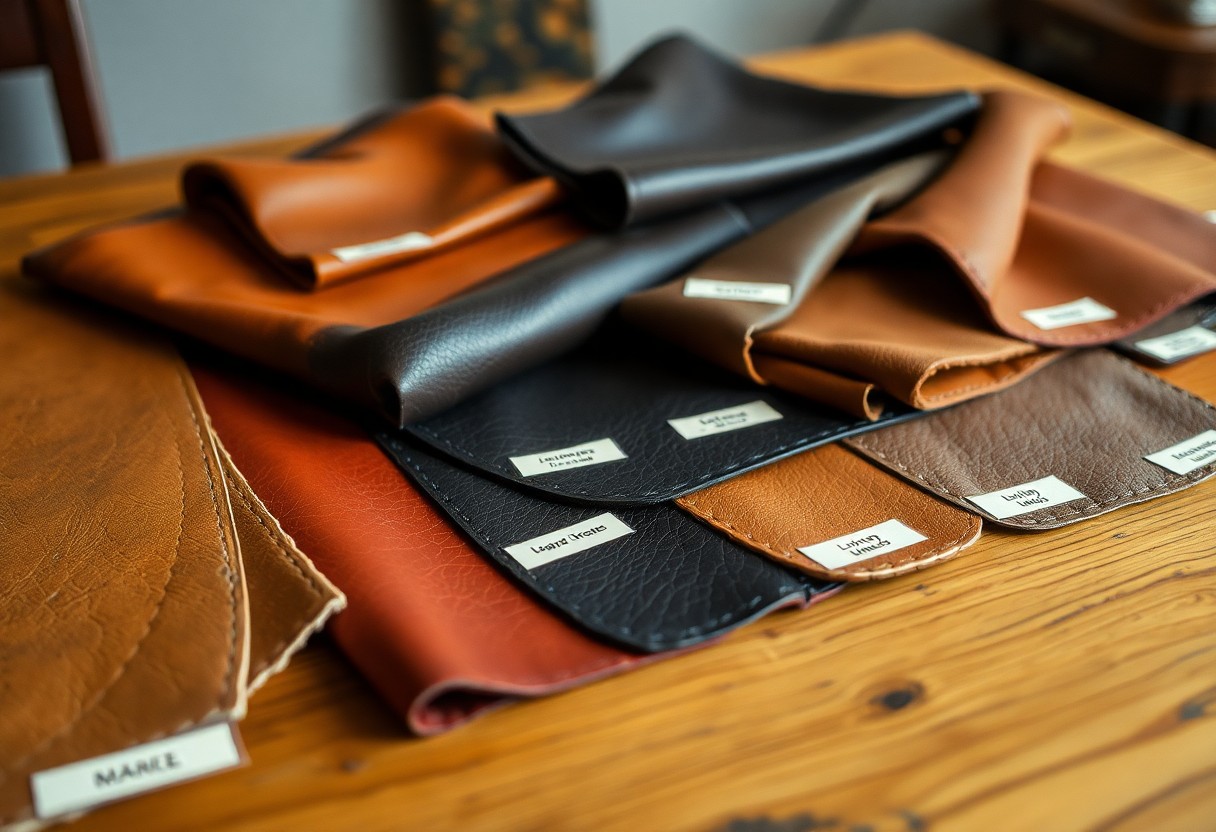
Critical Tips for Recognizing High-Quality Leather
When assessing leather quality, it’s important to keep several essential guidelines in mind. Look for full-grain leather that exhibits a consistent color and minimal surface blemishes, both indicators of superior quality. Inspect the grain pattern to ensure it appears natural and uniform, as this signals authenticity. Quality leather typically carries a pleasing aroma and should feel smooth to the touch. Furthermore, the edges should be neat and well-finished, showcasing craftsmanship. While price can often serve as a good indicator of quality, it should not be the sole determining factor in your purchasing decisions, as sometimes lower-cost options can surprise you with their excellent quality.
Conducting a Visual Inspection to Assess Leather Quality
When examining leather, the smallest details can lead to significant variations in quality. Look for natural markings and avoid leather that displays artificial grain patterns, as these may indicate inferior products. Your leather should exhibit a uniform color throughout, devoid of noticeable discolorations or patches that suggest poor manufacturing. The surface ought to be free of excessive scratches or scars, which can compromise the overall appearance and durability of the leather.
Utilizing Physical Testing Methods to Evaluate Leather Quality
Quality testing can be performed through straightforward yet effective methods. For example, bending the leather enables you to assess its flexibility; watch for any creasing patterns that might indicate lower quality. Gently pressing your fingernail into the leather’s surface should create a temporary indentation, which is a hallmark of genuine leather. The leather should feel smooth and warm to the touch, rather than cold or plastic-like, which are telltale signs of synthetic materials.
It’s crucial to acknowledge that physical testing can reveal a wealth of information about leather quality. When bending quality leather, it should not crack or develop white marks, which can indicate subpar quality. You might also conduct a water drop test to determine authenticity—genuine leather will absorb water temporarily, rather than allowing it to pool on the surface. A flame test, which should only be executed by professionals, can further confirm the authenticity of the leather, providing peace of mind during your purchase.
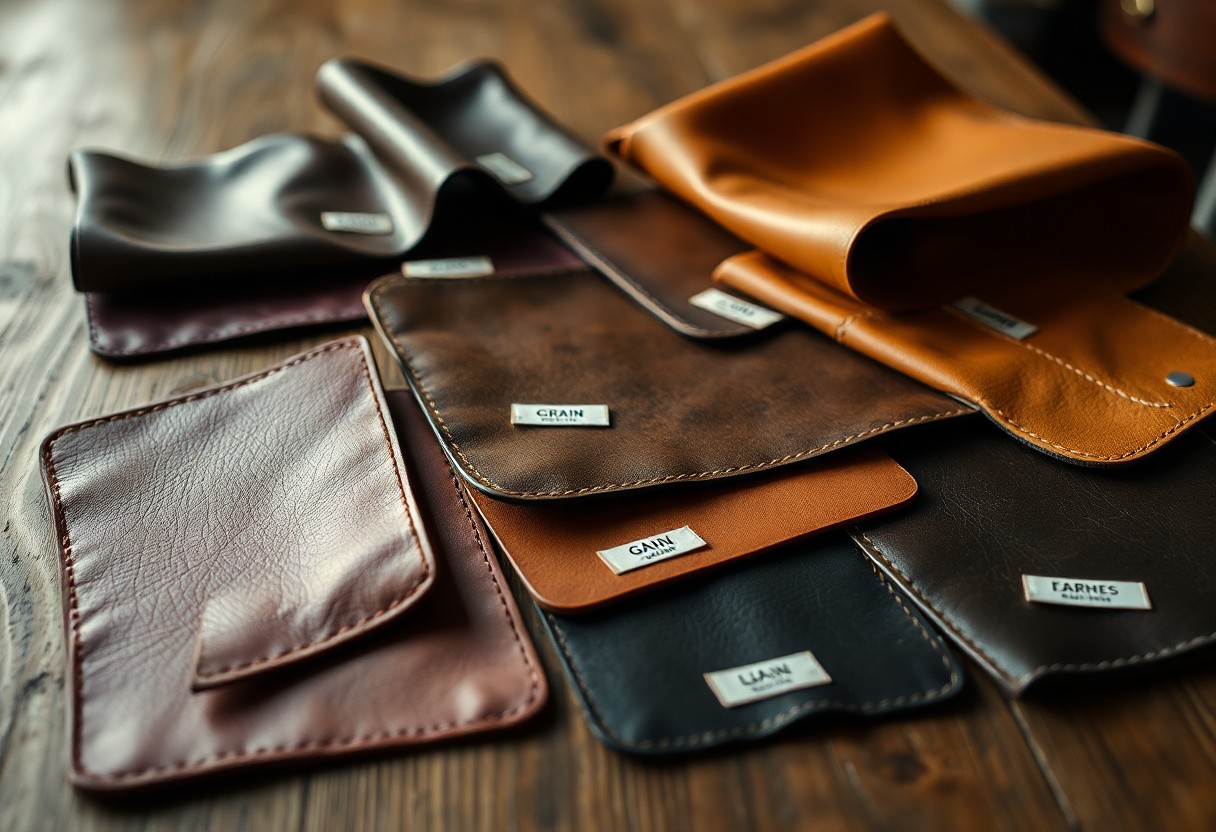
Your Complete Step-by-Step Guide to Proper Leather Care
Unlike synthetic materials, leather demands specialized care to maintain its quality and extend its lifespan. Regular maintenance is vital for your leather items to prevent damage and uphold their aesthetic appeal, ensuring they retain their attractive appearance for years to come.
| Basic Care | Advanced Care |
| Leather cleaner Soft brush Microfiber cloth |
Leather conditioner Weather protector Leather polish |
Employing Effective Cleaning Techniques for Your Leather Items
To clean your leather items effectively, start with a dry brush to remove surface dirt and debris. Always test any cleaning product on a small, inconspicuous area first to prevent potential damage. When applying leather cleaner, use a soft cloth and employ gentle circular motions, ensuring not to soak the leather with excessive amounts of water, which can lead to damage. Properly drying the leather is vital to maintain its integrity and appearance.
Protecting and Storing Leather Goods Correctly
When it comes to storing your leather items, careful consideration is essential. Ensure they are kept in a cool, dry place away from direct sunlight to avert fading and cracking. It’s advisable to apply leather conditioner every 3-6 months to prevent cracking and maintain the leather’s natural flexibility, ensuring it remains supple and visually appealing.
The success of your leather care routine hinges on consistent application. Protect your items from water damage by using a high-quality waterproofing product specifically designed for leather. Regular conditioning maintains the leather’s natural oils, while proper storage practices avert shape distortion and color fading, helping your items look fresh and new.
Weighing the Advantages and Disadvantages of Different Leather Types
To facilitate informed decision-making regarding leather products, here’s a detailed comparison of various leather types and their characteristics. Each type presents distinct advantages and limitations that influence their suitability for different applications, assisting you in making the best choice for your needs.
| Pros | Cons |
|---|---|
| Full-grain leather: unmatched durability, ideal for long-term investment | Higher price point, may show all natural marks, appealing to authenticity seekers |
| Top-grain leather: smooth finish, water-resistant, and versatile for numerous uses | Not as durable as full-grain options, potentially sacrificing longevity |
| Split leather: affordable and flexible, suitable for budget items | Lower quality, less durable than others, necessitating more frequent replacement |
| Nubuck: sophisticated appearance, soft texture, excellent for fashion items | Requires regular maintenance to retain its look, demanding ongoing care |
| Suede: versatile and comfortable, ideal for casual wear | Prone to staining, challenging to clean, requiring careful handling |
Understanding Durability and Longevity Across Various Leather Types
There is significant variability in how different leather types age and wear over time. Full-grain leather can last for decades when properly cared for, making it a worthwhile investment, while split leather may require replacement after just a few years of regular use due to its lower durability and quality.
Cost Considerations When Selecting Leather for Your Needs
The prices of leather can vary considerably based on quality and source. Premium full-grain leather can be 5-10 times more expensive than split leather alternatives, making it essential to consider your budget in conjunction with the desired quality. However, investing in higher-quality leather often yields better value over time, as these materials maintain their appearance and structural integrity much longer than their lower-quality counterparts, ultimately saving you money in the long run.
Customizing Maintenance Needs to Suit Leather Quality
A clear correlation exists between the quality of leather and its maintenance requirements. Top-grain and full-grain leathers usually require less frequent but more specialized care, ensuring that their characteristics and aesthetics are preserved for as long as possible. This approach guarantees that your investment continues to provide value and satisfaction.
Moreover, each leather type necessitates specific cleaning products and techniques tailored to its unique properties. Your maintenance routine should align with the type of leather you own to ensure optimal preservation and longevity of your investments, ensuring each piece serves you well for many years to come.
Recognizing Common Uses and Applications of Leather
Having gained insights into the various leather types, you’ll find that each variety serves distinct purposes based on its unique properties and durability levels. The choice of leather can significantly influence the performance of the final product, making it essential to pair the right leather with its intended use for optimal results.
Fashion and Accessories: Unlocking the Full Potential of Leather
In the fashion industry, applications range from luxurious high-end goods to everyday essentials. For example, you’ll find calfskin used in premium shoes and handbags, while exotic leathers like crocodile and stingray are featured in exclusive designer pieces. Your leather accessories might include wallets, belts, and watch straps, each crafted from specific leather types to guarantee optimal functionality and style, reflecting the quality and craftsmanship involved.
Furniture and Upholstery: Selecting for Aesthetic Appeal and Durability
In the context of furniture, full-grain and top-grain leathers are the most favored selections, renowned for their durability and visual appeal. Upholstered pieces that utilize these robust materials can endure daily use while developing a stunning patina over time, enhancing their visual charm and character.
When choosing leather for your furniture, various factors come into play. You’ll want to consider durability ratings, with full-grain leather capable of lasting up to 25 years when properly maintained. The choice of leather greatly impacts both aesthetic quality and longevity, ensuring that your investment withstands the test of time while retaining a classic look.
Industrial Applications: The Demand for High-Performance Leather
Industrial applications of leather require high-performance materials that can withstand rigorous conditions. You’ll find specialized leather types used in automotive interiors, protective gear, and heavy machinery components, where durability is crucial for safety and functionality.
To ensure optimal performance in these industrial contexts, your leather choices must meet specific standards. Safety-rated leathers are employed in protective equipment, while specialized treatments enhance resistance to heat, chemicals, and wear in industrial machinery, making them essential for demanding environments.
Empower Yourself with Knowledge to Make Informed Leather Choices
With the insights gained from this guide, you are now equipped to make informed decisions about the various types of leather that cater to your unique needs. Understanding leather characteristics enables you to select the ideal material for your footwear or accessories. From the adaptability of calfskin to the exceptional properties of exotic leathers, you can now balance durability, comfort, and style against your specific preferences. Each leather type offers distinct benefits, allowing you to align these qualities with your intended use for maximum satisfaction. Whether you’re looking for sturdy boots made from cowhide or sophisticated dress shoes crafted from calfskin, you can confidently choose the perfect leather to complement your lifestyle and aesthetic.
Your Questions Answered: Frequently Asked Questions About Leather Types and Their Features
Q: What sets calfskin apart from full-grown cow leather?
A: Calfskin is sourced from young cattle under one year old, providing a softer, more supple texture with finer pores, making it perfect for luxury items. In contrast, cow leather comes from adult animals, resulting in a thicker and sturdier material with more prominent markings and enhanced durability. Calfskin is often preferred for high-quality dress shoes, while cow leather is frequently used for work boots and more economical footwear options, offering a balance of durability and affordability.
Q: What makes shell cordovan a distinctive leather type?
A: Shell cordovan is produced from the muscle membrane located beneath the skin of a horse’s rump. This unique leather showcases specific traits: it does not crease but forms rolls, features a dense shiny surface, and is exceptionally durable, making it a coveted choice for high-end footwear. The processing of this leather involves turning it inside out, which differentiates it from conventional leather types, resulting in a distinctive and luxurious product.
Q: How do exotic leathers, like crocodile and stingray, differ in properties and suitability?
A: Crocodile leather is soft, flexible, and harvested from the belly and sides of the animal, making it a luxurious option that often requires CITES certification to ensure sustainability. Conversely, stingray leather is known for its extraordinary hardness and durability but can be more challenging to work with due to its unique texture. Stingray shoes are typically crafted as wholecuts since the material only permits stitching between its hard “pearls,” showcasing the craftsmanship involved in their creation.
The article Guide to the different types of leather characteristics and uses appeared first on My Shoes Finder
